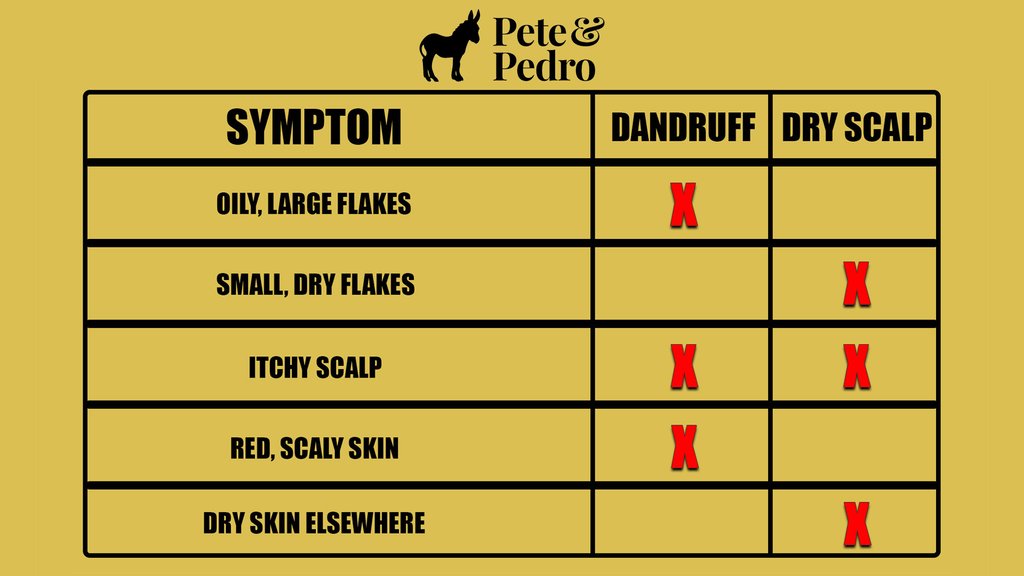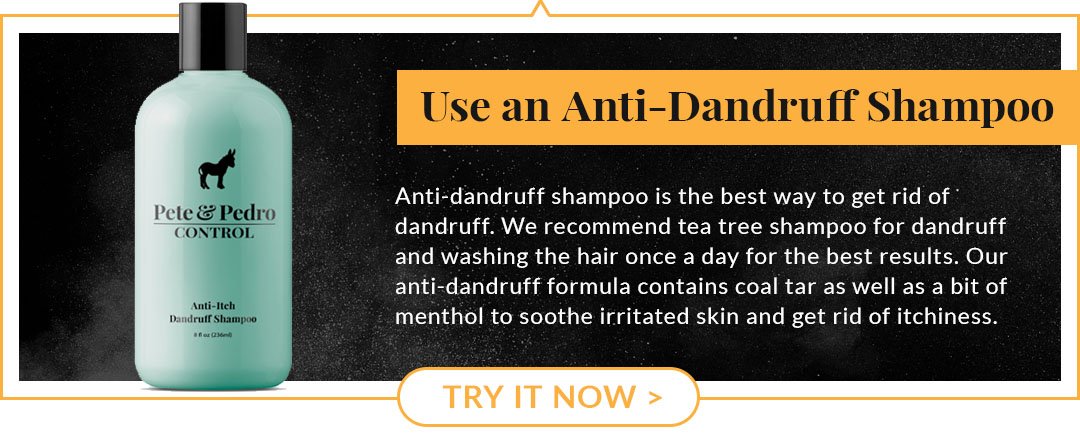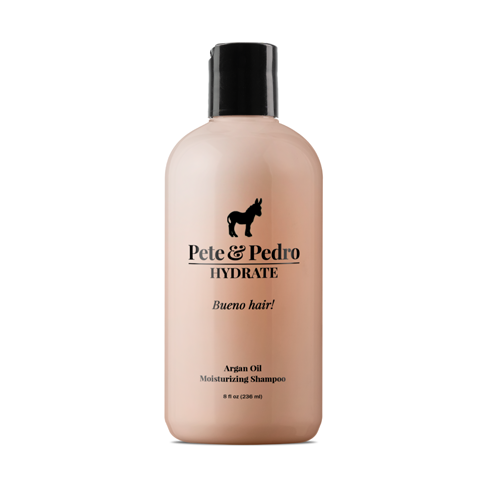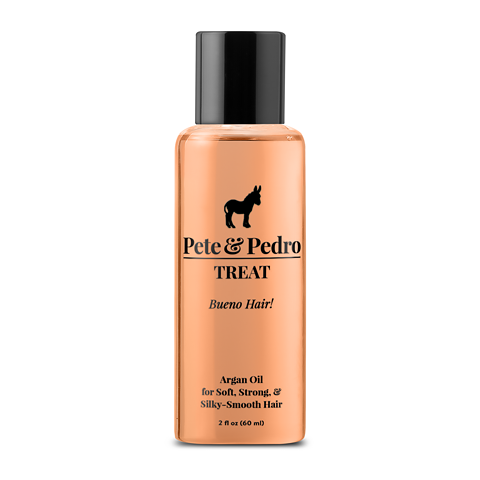What Is The Difference Between Dandruff vs. Dry Scalp
When it comes to truly Bueno Hair, we can all agree on one rule: NO FLAKES ALLOWED! Now just because a few dandruff lakes are flying, doesn’t mean you have dirty hair or poor hygiene. In fact, even those of us with the strictest of grooming routines can suffer from flakes from time to time. But do you truly have dandruff or is it just dry scalp? You didn't know there was a difference... did you? You're not the only one and knowing the problem is the first step in eliminating those pesky flakes for good. Here’s how to tell the difference, and the steps you'll need to take to be flake free once and for all.
Do I Have Dandruff or Dry Scalp?
Dandruff is caused by a condition known as seborrheic dermatitis which causes the scalp to become oily, red, and scaly. The flakes produced are oily, and white or yellow in color. It is these flakes that then break off as dandruff. About half of the world’s population has dandruff, and unfortunately for us gents, men experience dandruff more often than women. The severity of dandruff can depend on different factors including the amount of sebum your skin produces, the overproduction of a type of fungus almost all humans have known as Malassezia, and general susceptibility. Although dandruff is a chronic condition, it is not contagious and can be treated and prevented!
Dry scalp on the other hand produces much smaller, whiter, and drier flakes. If your scalp is not just itchy, but also feels tight, you probably have dry scalp. Our skin tends to become drier as we age, including our scalp. So, if your noticing flakes later in life, and it hasn’t been an issue before, it could just be dry scalp. Other possible causes of dry scalp include dry weather conditions, an allergic reaction known as contact dermatitis, or simply living a less-than-healthy lifestyle.
Check out our Dandruff vs. Dry Scalp chart for a quick rundown on some common symptoms:

Although the effects of both dandruff and dry scalp are similar, the basic treatments are quite the opposite. So, it’s important to know which problem is affecting you!
How To Eliminate and Prevent Dandruff
Most popular over-the-counter anti-dandruff shampoos use Selenium Sulfide and Zinc Pyrithione. These ingredients have antifungal properties and are effective in eliminating dandruff, but won’t necessarily leave your hair smelling and looking Bueno. If you’re looking for something a bit more natural, make sure to grab a shampoo loaded with Tea Tree Oil. In fact, according to one study by PubMed, shampoos and conditioners with at least a five percent concentration of tea tree oil appear to be more effective in the treatment of dandruff.
 If you’re really looking to stop dandruff flakes in their tracks, grab a dedicated dandruff shampoo that’s jam packed with Coal Tar. Coal Tar helps slow the growth of skin cells to decrease scaling and dryness, which means no more flakes! Also look for something with a touch of menthol to soothe your irritated skin and help ease the itchiness. Bonus points if it includes Tea Tree Oil as well. Our Control Dandruff Shampoo hits the spots on all these requirements!
If you’re really looking to stop dandruff flakes in their tracks, grab a dedicated dandruff shampoo that’s jam packed with Coal Tar. Coal Tar helps slow the growth of skin cells to decrease scaling and dryness, which means no more flakes! Also look for something with a touch of menthol to soothe your irritated skin and help ease the itchiness. Bonus points if it includes Tea Tree Oil as well. Our Control Dandruff Shampoo hits the spots on all these requirements!
How To Eliminate and Prevent Dry Scalp
When it comes to combating dry scalp, there can be many causes and therefore, many solutions. Dry weather conditions can increase scalp flakes so you may want to consider buying a humidifier to add moisture to the air in your home or office (this is also great for your skin). Dry scalp and itchiness can also be caused by an allergic reaction known as contact dermatitis and you may want to consider changing hair or face products which can cause this. Simply living a less-than-healthy lifestyle, excessive alcohol, being dehydrated, eating an unbalanced diet, can all add to scalp dryness.
To help bring some hydration back into that dry scalp there’s a few things you can do. When it comes to your shower routine, don’t over wash your hair, as it may strip your hair of important oils and add to the dryness of your scalp. We’ve said it before, we will say it again, condition more, shampoo less! Also try to avoid hot showers as the warmer temperatures can contribute to dry scalp and itchiness.
For dry scalp a simple, moisturizing shampoo containing Argan Oil is the best course of action. Argan oil is all natural, and makes your hair healthier, stronger, shinier, silkier, frizz-free, and softer without making it greasy or weighing it down because it contains a ton of vitamin E, fatty acids, and antioxidants. Not only that, it is amazing for hydrating your scalp. If you want to take your hair and scalp health to the next level, you could also use a Pure Argan Oil Treatment a few times per week. Just apply to your hair after your shower and let the oil work its magic.
Alternative Dandruff and Dry Scalp Treatments
- Scalp Massage: A scalp massage can help deep clean and exfoliate your scalp. Using a great massaging shampoo brush is an easy way to make sure your hair and scalp are as clean as can be, and it feels amazing.
- Improve Your Diet & Physical Environment: Try to make sure your hair and skin are getting all the vitamins and nutrients they need; and remember, stay hydrated! If you want to take out the guess work, grab yourself a biotin supplement. Biotin is the key ingredient for healthy hair skin, hair, and nails. This includes your scalp. Get in the routine of taking them once per day for easy and hassle Bueno Hair.
- Go Natural: Certain hair products may contribute to scalp buildup and overall dryness. Try taking a break from your current styling routine, and keep those luscious locks natural. If you notice your dry scalp improving after stopping using a product, it’s most likely the culprit, and a change in product could be in store.
- See a Dermatologist: If you find that your symptoms are not improving over the course of a month after implementing some of these treatments, it is best to see a trained professional for a more thorough examination, diagnosis, and treatment.
Make Sure To Check Out:
How To Get Rid Of Beard Dandruff
How To Get Rid Of Yellow Nails
← Older Post Newer Post →
















